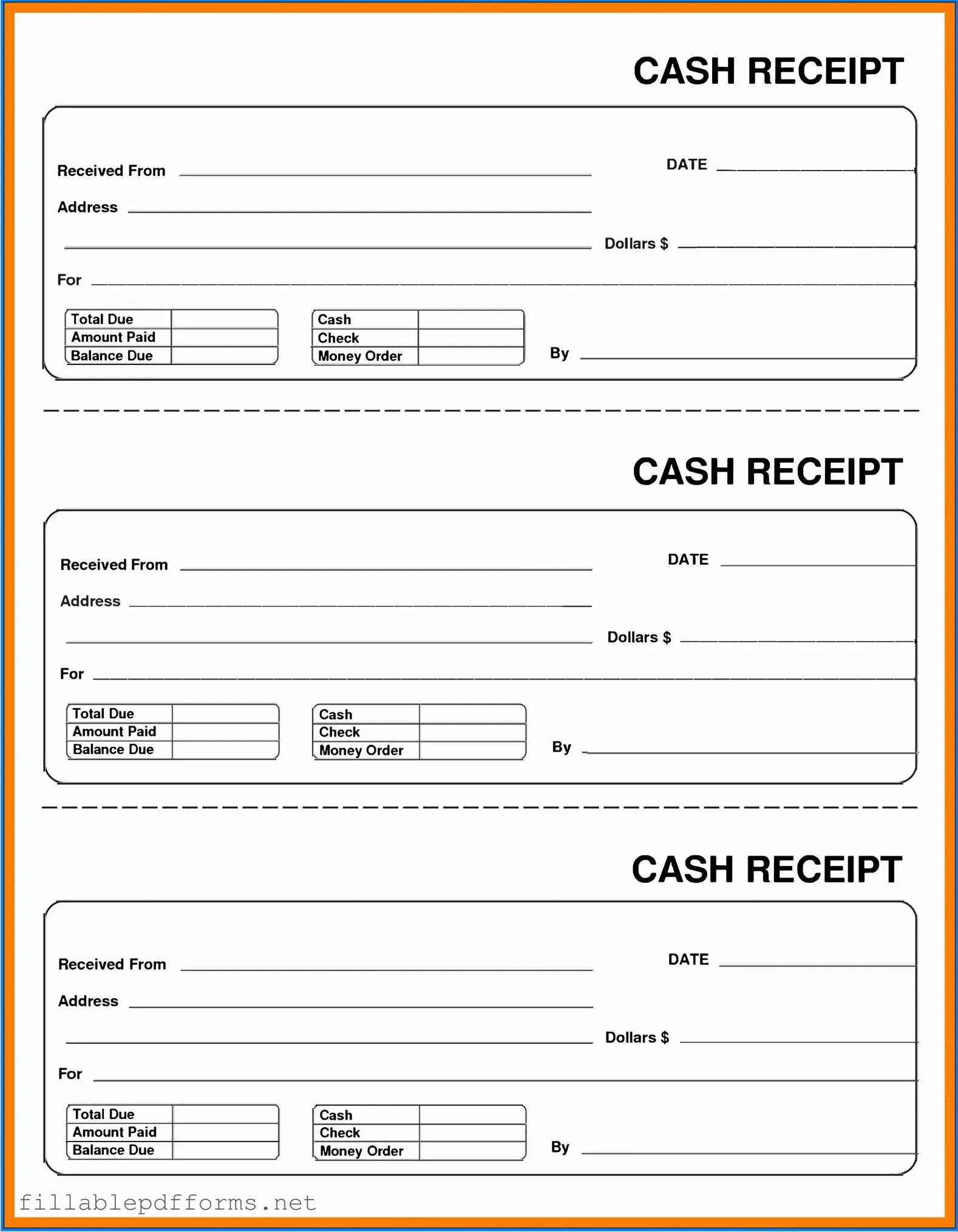The Cash Receipt form plays a crucial role in financial transactions, serving as a written acknowledgment of payment received by a business or organization. This form typically includes essential details such as the date of the transaction, the name of the payer, and the amount received. Additionally, it may specify the method of payment, whether cash, check, or electronic transfer, providing clarity and transparency for both parties involved. A well-organized Cash Receipt form not only helps in maintaining accurate financial records but also serves as a valuable tool for tracking income and managing accounts. By documenting each transaction, businesses can ensure accountability and facilitate smoother audits. Moreover, this form can be customized to meet the specific needs of different organizations, allowing for the inclusion of logos, terms, and additional notes relevant to the transaction. Understanding the components and importance of the Cash Receipt form is essential for anyone involved in financial management, as it lays the foundation for effective bookkeeping and financial oversight.
